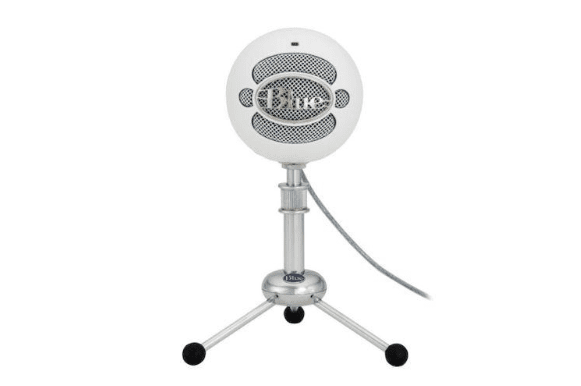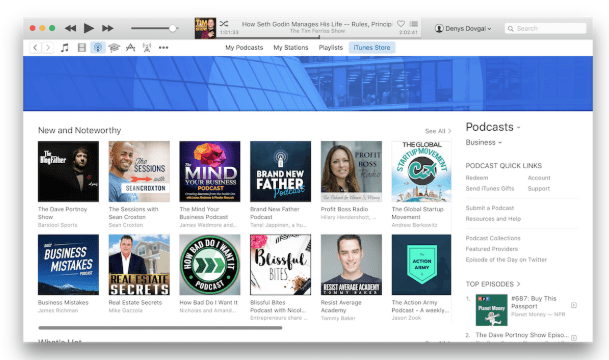Today I want to talk in detail about the process of creating a podcast from initial idea to implementation. What you need to do to start a podcast, what steps you have to take to create a podcast, what software and gadgets you should use.
So let’s imagine that you have a desire to run a podcast. Having a desire is definitely good, but as you know, it is not enough. Lets’ see what you can start with.
Define the podcast theme
Perhaps this is the main thing to start with. You should determine the theme for your podcast.
There are two approaches:
- Choose a topic that you like and understand.
- Choose a specific niche where the podcast will be in demand and where there is a chance to find an audience.
Unfortunately, a topic that you may like and now well may get no response from the audience and then it will be a problem. Therefore, at the initial stage, it is important to choose a topic for a podcast where you can potentially get a large audience of listeners. The numbers are very important.
Of course, you can just run the podcast as a hobby and at some point throw it away. I recommend treating the creation of a podcast exactly as a product, and for this product, you need to choose a niche.
Ideally, when the topic that you like and understand has a response from the market and the niche is potentially large. The easiest way to determine a topic for a podcast is to see if there are already podcasts or books on a similar theme. If yes, then you can safely start.
Make a plan for episodes
The biggest mistake that makes 90% of those who start podcasts is the lack of a plan for 3-6 months in advance. There is enthusiasm at the start, and after a while, it dies away.
You should think out a plan for the publication of episodes, for example, 1 episode per week. It’ll be enough. Then you will need four episodes per month and 12 episodes for the next three months.
An important point: it is advisable to record 12 episodes right before you officially launch your podcast or at least 5-6 episodes for the first month of publication. Otherwise, it will turn out that you will make a loud announcement, you will have 2-3 episodes, and after that, there will be silence.
Invite interesting guests to a podcast
Let’s define the type of podcasts:
- Solo podcasts – when you alone talk about a topic or answer questions.
- Interview podcasts – when you invite guests and interesting speakers to chat.
The question arises – what type of podcasts to choose?
From personal experience, I recommend doing podcasts with guests. Then it will be easier for you to get a new audience and listeners and each episode will be more diverse.
The following question is how to invite guests?
If you are just starting and suppose you don’t have any popularity yet. So start with your friends and acquaintances. Just find people who know to the subject of your podcast and invite them to chat.

Preparing to record a podcast
It is quite a routine process, and for each new episode, the process will be repeated. This is how I prepare the process for recording a podcast:
- Invite the guest and set the day of the podcast recording
- Prepare a list of questions and send it to the guest for review.
- Send instructions for the guest on the necessary equipment for recording
- On the appointed day, hold a conversation and record a podcast.
- Do audio editing and decoding
- Get ready audio track and send to the guest for approval
- Publish a podcast on possible platforms.
As you can see, this is a fairly simple and clear checklist for recording a podcast.
You can do everything yourself, but you can also work with an assistant, whose responsibilities will include preparing questions for the podcast, coordinating the recording time, processing materials, publishing the podcast. I recommend the second option.
The process of recording a podcast
Many people think that there is some kind of magic. Everything is very simple. All podcasts are recorded completely remotely, and in most cases, you don’t need to go anywhere.
Of course, many podcasts are also recorded in studios. It is also an option, but it is much more complicated and not necessary.
Here’s how the podcast recording process goes and what you need:
1) Professional microphone
You really need a high-quality microphone. Sound quality is the most important factor when recording a podcast, and your listeners should feel comfortable while listening to it.
You can use Blue Snowball ($ 50- $ 75 on Amazon) or Audio-Technica AT2020 ($ 85 – $ 99 on Amazon)
2) Application for recording podcasts
To record each podcast, I use Skype and an embedded application Skype Call Recorder. This application is not free, so you will need to buy it. Since everyone has Skype, it is convenient to communicate through it, and the quality of communication is more than great.
It is very important to record your voice, and your guest’s one separately.
To record a voice, you can use an application like Audacity (a free application for Mac and PC) or just QuickTime if you are a Mac user.
3) Editing of audio tracks
To make high-quality editing, you need three audio tracks:
- Audio with the voice of your guest
- Audio with your voice
- General recording of the conversation via Skype (thanks to this recording, you can make sync during editing)
- Jingle preparation
If we are talking about a professional approach to creating a podcast – you will need to make a jingle.
This is such a trademark intro with music, a podcast description and a short overview of the episode. It is relatively easy to make such a jingle. You can record your voice on your own or simply prepare the text and give it to the recording studio, where a professional announcer will read it and make a track with music in the studio.
Please note that it’s recommended to have a podcast in the MP3 format. Thus it can be played on any audio device. So if you have a podcast recorded in WAV, WMA, FLAC, you need to use a free audio converter to save FLAC into MP3 in high quality. I recommend choosing Freemake software. It will do the job in three clicks, and you won’t notice any quality loss.
4) Design of the podcast

For some reasons, may podcast creators skip this moment, but the design of your podcast is very important. For many people (visuals), the podcast design will play a decisive role before they click the play button.
Your cover should be very clear in the context of the podcast and vividly talk about what the podcast is about.
To create a podcast cover, it makes sense to work with design, make several options and allow your listeners to choose the best one.
Publishing a podcast
Before publishing an episode, it is important to name the podcast and prepare a description for it correctly. Don’t forget to use some SEO tricks and strategies to make your description attractive. When everything is ready, it’s time to share the podcast with the world.
There are so many different hosting sites, and yet I recommend focusing on the main ones:
- iTunes
- Soundcloud
- Google Play Podcast
- Your blog or website
These are the main platforms where it makes sense to publish a podcast, and perhaps these are the most popular platforms. iTunes allows you to publish the podcast completely free. The only drawback is that it does not provide detailed statistics.
Keeping a podcast is quite a costly process, both in time and resources. Many people start the podcast and then throw it for various reasons, and one of the notable ones is the lack of a systematic approach and a lack of understanding of what to do with it.
It is important to understand that a podcast should be an element of your business and part of a business model. It is the source of attracting new listeners and new customers. There exist various forms of monetizing a podcast. So if you start doing it be patient and follow the tips I’ve described.







